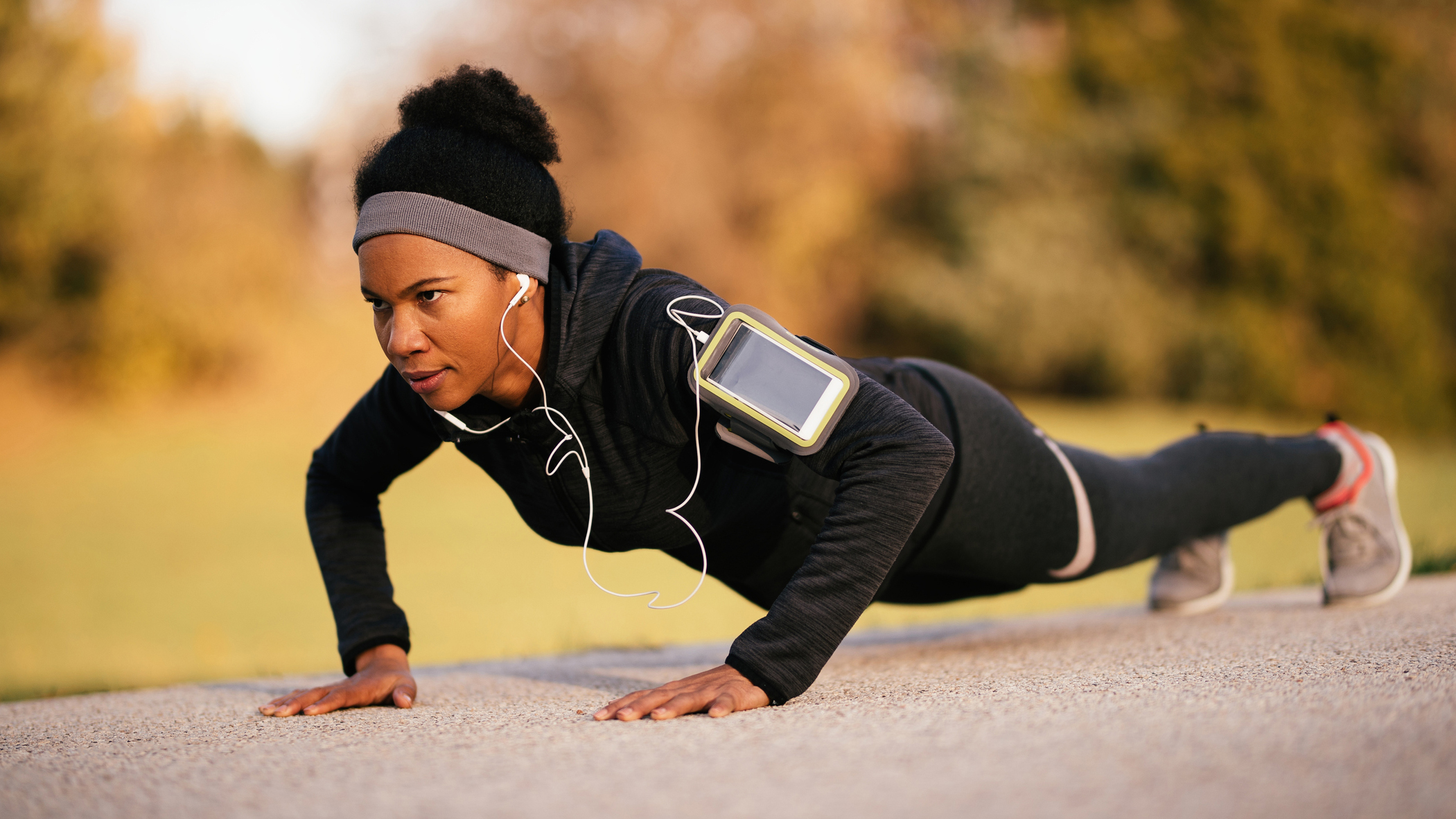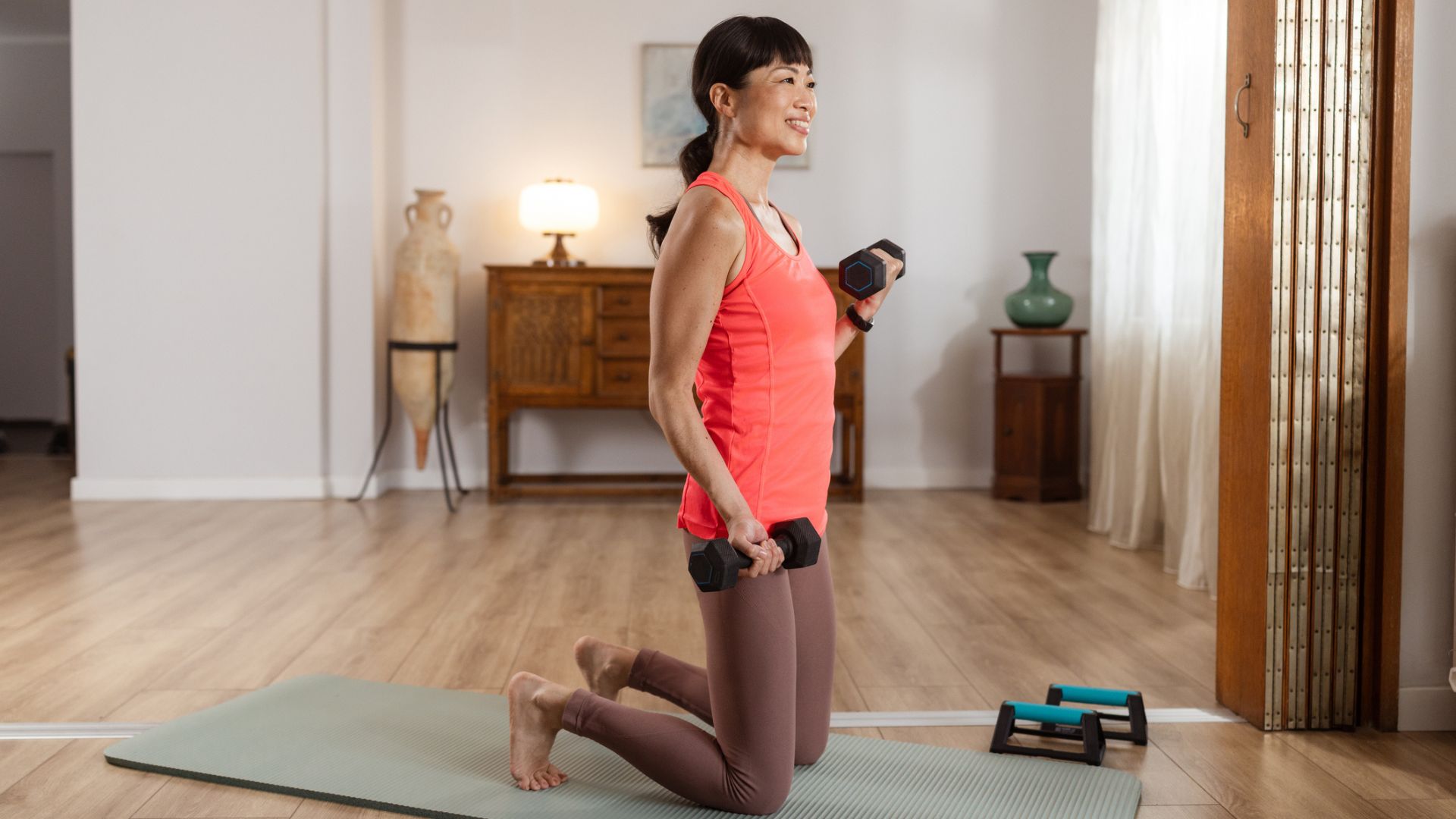The viral "Bring Sally Up" push up workout challenge is back for lockdown
Can you finish the song? Bring Sally Up, played through your workout earbuds, can transform your home workout


With gyms closed, many people are looking for a new workout routine to get to grips with during lockdown, as they can't access their favourite gym equipment. Now isolated fitness is the name of the game, the "Bring Sally Up" workout challenge is enjoying a renewed resurgence.
The premise of the workout challenge is very simple: you pick an exercise, such as the push up or squat, and you begin to play the song "Flower" by Moby, which has a repetitive chorus of "Bring Sally up, bring Sally down". Every time you hear the word "up" you perform the upward part of the movement, and every time you hear the word "down" you descend, holding the pose until you hear the word "up" again.
It's often done with push ups as a serious test of core and upper-body strength (here's how to do a push up properly, so no cheating) but it can also be done with squats and lower-body work too (here's how to do squats). If you're really brave, you could try it with pull-ups and dips, but you'll need to be exceptionally fit and strong. Here's a prime example to follow along – and be warned, it's harder than it looks.
Get the song on your best workout earbuds and see how you do, marking the timestamp in the song at which point you gave up. You've got a goal to aim for and surpass for next time, with the end result being to complete the entirety of the song.
It's small wonder this challenge has had a real resurgence in popularity: in lockdown, not only are we all very bored and craving something to do, but it puts a new spin on simple bodyweight exercises, which we can do anywhere we have a small amount of floor space.
The workout places a lot of stress on our arms and legs thanks to isometric holds. Holding your squat or push up at the bottom, most difficult point of the movement creates an enormous amount of tension in your muscles. One study, published in the Journal of Sports Science, found incorporating isometric training into your routine delivered even more strength gains than conventional movement-based stuff.
Why do a push up challenge?
To get better at this workout, you're going to need to do more push ups. A lot of push ups. However, that's not a bad thing: push ups build muscle in your chest, arms and core, helping you develop fitness, strength and endurance. But as a big compound movement, push ups also help you stave off obesity and decrease your risk of early death.
Get the Fit&Well Newsletter
Start your week with achievable workout ideas, health tips and wellbeing advice in your inbox.
A study published in the Journal of the American Medical Association looked at push ups and their role as an indicator of physical fitness. The study looked at over a thousand adult men across 10 years, examining the relationship between push up capability and heart disease.
The results were clear: men who could perform at least 40 push ups had a very low risk of cardiovascular diseases and heart attacks. Those who couldn't complete a set of 10 push ups, on the other hand, had a much higher risk of heart disease and early death.
Matt Evans is an experienced health and fitness journalist and is currently Fitness and Wellbeing Editor at TechRadar, covering all things exercise and nutrition on Fit&Well's tech-focused sister site. Matt originally discovered exercise through martial arts: he holds a black belt in Karate and remains a keen runner, gym-goer, and infrequent yogi. His top fitness tip? Stretch.
-
 Do your gut a favor with this dietitian's gut-friendly veggie-filled fried rice recipe
Do your gut a favor with this dietitian's gut-friendly veggie-filled fried rice recipeKeep your tummy happy with this flavorful twist on a favorite
By Lou Mudge
-
 I’m a personal trainer and these are some of my favourite exercises to build core and upper body strength at home
I’m a personal trainer and these are some of my favourite exercises to build core and upper body strength at homeAll you need is a set of dumbbells for this kneeling workout
By Maddy Biddulph